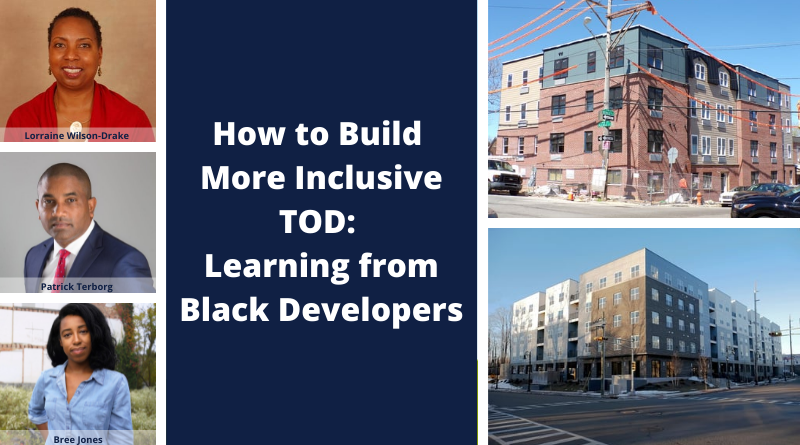What does development look like when driven by developers of color? What might be learned from their experiences and how might these lessons be applied to transit-oriented development? The development field is notorious for comprising, primarily, white men. By some accounts, nearly 95 percent of developers hew to this demographic, arguably contributing to a distorted industry, in which not all housing demand is suitably recognized and addressed. Perspective can have a dramatic effect on what types of projects are imagined, designed, funded, and constructed.
This applies to TOD, too. It is worth considering—and exploring—the possibility that, in a more diverse industry, transit-oriented development in the United States might be more varied, as broader perspectives develop housing for those with a mix of means and needs. Through interviews with developers of color working in Philadelphia, Baltimore, and New Jersey, this article considers development from a more expansive viewpoint, suggesting new forms that transit-oriented development can take, far from the current model.
Creating “Affordable Luxury” in Philadelphia
Lorraine Wilson-Drake runs Wilson-Drake Development, a small property development and management business in Philadelphia, Pennsylvania. She and her husband develop small apartment buildings, and then lease the units.
“We have a niche that’s pretty much young urban professionals, people who are just getting started in their careers.” Wilson-Drake said. The company calls their model “affordable luxury.” They work to create spaces that offer quality amenities at a reasonable price point.
Wilson-Drake walked us through their development process. It begins with procurement—the purchase of a piece of land, either vacant or with another building already on it. The company then works with an architect to figure out a plan, acquires financing, hires contractors, builds the project, and moves new tenants in.

Wilson-Drake, who previously worked in television advertising, decided to become a developer after moving to Philadelphia, and growing frustrated by the difficulty of finding a quality apartment. At the time, there were plenty of vacant lots and buildings. “I was looking for something and I couldn’t find it, so I decided to make it myself,” she said. Wilson-Drake began buying properties, and working to rezone them to allow for future development.
Because of their focus on small projects, and willingness to undertake the rezoning process, the company has found their niche in the Philadelphia development field. “Most people won’t take that on,” Wilson-Drake said. Rezoning can involve engaging with community groups and local elected leaders, hiring a lawyer, and attending multiple meetings where there can be negative feedback. “There’s always that vocal minority,” she said.
After the rezoning is approved, Wilson-Drake will go to a bank and apply for financing to build the project. Then, they renovate or construct a building, which is usually not prohibitively expensive. “Our value proposition is we’ll give you a great apartment, but it’s probably in a neighborhood undergoing change.”
The model, thus far, has worked. “There were a lot of people like me who wanted that product and couldn’t find it,” she said. “We start with the end user in mind, asking, ‘What can people really afford to pay?’”
According to Wilson-Drake, Philadelphia is in the process of recovering economically from the effects of deindustrialization and suburbanization. The city still has nearly 40,000 vacant lots, the byproducts of white flight in the 1960s and ‘70s. While Center City may be built-out and beautified, many neighborhoods still show the ravages of systemic disinvestment. By working outside of Center City, the company is contributing to the broader revitalization of Philadelphia.
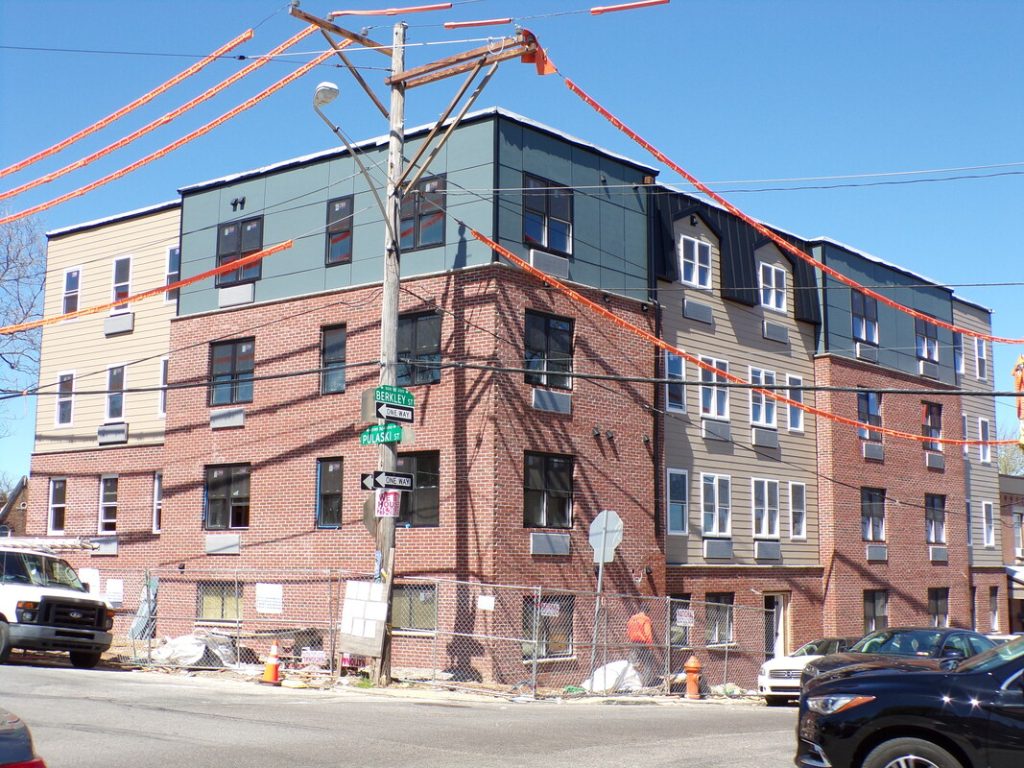
Transit plays a big part in determining which properties Wilson-Drake chooses to develop. “We always think about how people are going to commute. One thing Philadelphia needs to do is increase its density, and everybody’s not going to have a parking space.” She is currently working on a multifamily project, and was attracted to its location, in part, as it is close to a SEPTA Regional Rail station. The company owns another cluster of buildings located within a block of SEPTA’s elevated Broad Street Line. “Our target [client] doesn’t always have a car,” Wilson-Drake said, noting that she sees an area proximate to transit as an ideal place for multifamily development.
As for being a developer of color in a white-dominated space, Wilson-Drake said, “It’s so hard, I’m fortunate that my husband has a company, and I don’t have to hit the profit targets that a lot of people have to do. But it’s really difficult.” Financing, finding the funding for purchasing a property, was a chief challenge here. The finances are “typically a hurdle that most minority developers just can’t get over. There’s a few of us, but not very many.”While banks are usually amenable to loan funds for the construction phase, it can be more difficult to acquire capital for land acquisition. Coming up with this money can be challenging and slows growth for the company. Limited access to capital means that Wilson-Drake only has the capacity for about one project at a time, even if there are multiple opportunities to develop.
Transit plays a big part in determining which properties Wilson-Drake chooses to develop. “We always think about how people are going to commute. One thing Philadelphia needs to do is increase its density, and everybody’s not going to have a parking space.”
Lorraine Wilson-Drake
One city policy that has helped the company is a 10-year tax abatement on new development or renovations. The policy is set to expire, as some large-scale luxury developers have taken advantage of the incentive, leading it to become politically unpopular. But Wilson-Drake suggested that, rather than eliminating it entirely, Philadelphia tailor the policy for certain neighborhoods, where it might want to promote growth, or reserve it for development companies of a smaller size.
A reimagined tax incentive program, coupled with improved access to capital could ensure that Wilson-Drake Development can continue to create small and medium-sized housing units across Philadelphia. Without such measures, Wilson-Drake expressed that work could only continue at a slow pace.
Stacking Tax Credits in New Jersey
Patrick Terborg is a real estate developer and the founder and managing member of TD+Partners. His work focuses primarily on urban communities in New Jersey, particularly in Essex and Union counties, though he expressed interest in potentially expanding to underserved rural communities as well.
Terborg began his career working in corporate finance. Living in Plainfield, New Jersey, he became interested in the idea of building ownership within a community, and began attending local City Council meetings, advocating for improvements to the City. But, Terborg said, he realized that cities are not built primarily by politicians, but by private industry. He found that he could apply his finance skillset to his community to transform the built environment, and decided to become a developer.
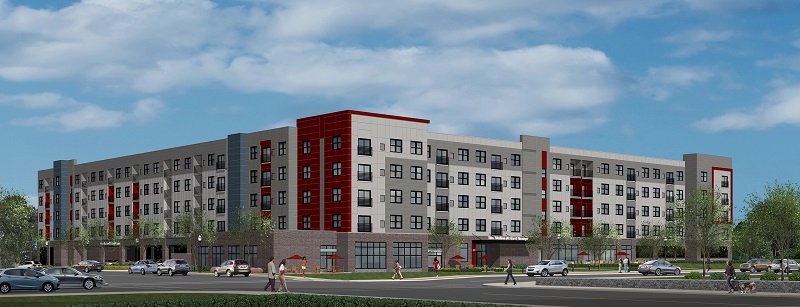
Terborg started as a consultant for a construction company working in East Orange, and soon became head of development. He found that he was adept at communicating with politicians and community leaders, and enjoyed applying economic concepts to real-life projects.
Terborg said that having a community-centric perspective and being willing to make community investments on projects, had helped to give him an edge. If a politician were to ask for a park that cost $200,000, he was more inclined to work with them, for both financial and social reasons. “If I have a $32 million transaction and the $200,000 more is going to make this project not feasible, I don’t know why we’re there.” he said. “You’re not trying to get every ounce of profit out of a deal. You’re trying to make sure it’s profitable, but you also try to have the biggest utility impact on the residents.”
Terborg’s work began to focus specifically on projects involving the complex world of tax credits. By pooling tax credits, it becomes possible to develop projects with quality affordable housing components. A recent example of this strategy is The Station at Grant Avenue, in Plainfield, a five-story 90-unit building comprising all-affordable units.
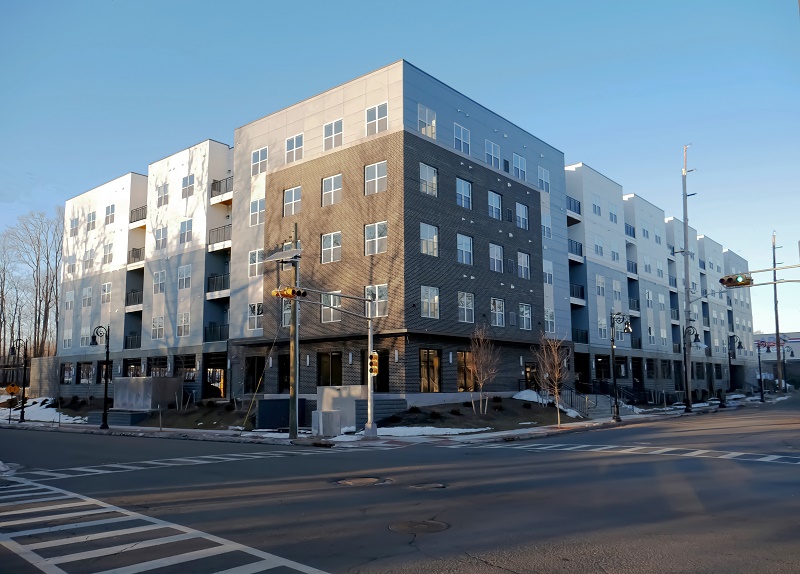
For nearly three decades, the five-acre property sat vacant. After the site was remediated, Terborg’s firm, and partner company J. G. Petrucci, worked to arrange the financing for a new adjacent affordable development and 44,000 sq. ft. commercial building, where ABC Supply Co. was to be located. The complex financing arrangement involved Low Income Housing Tax Credits (LIHTCs), New Markets Tax Credits (NMTCs), Community Development Block Grant-Disaster Relief (CDBG-DR) funds, and private equity. Typically, Terborg said, such a mixture of financing wouldn’t be used for a smaller-scale project, but it was this capital stack that made The Station at Grant Avenue feasible.
The Station at Grant Avenue project was also transit-focused, situated within walking distance of three NJ TRANSIT bus lines, providing local and regional connections to destinations such as Piscataway, Metuchen, Newark, and the Port Authority Bus Terminal in New York. Plainfield’s rail station, on the Raritan Valley Line, is a mile from the development, and, though accessible to residents, Terborg said that, in this case, it was the bus connectivity that made the location attractive. Multiple bus routes that could take residents to a variety of destinations, such as the grocery store, brought a different kind of value to the site than commuter-oriented rail.
Terborg suggests reforming how tax credits are currently structured. Because of current IRS recapture rules, responsibility for the financial performance of an affordable development rests on the private financial institution. If an affordable unit were offered for sale, and the owner defaulted on their mortgage, the financial institution would be left liable. This exposure to risk then creates a perverse incentive for the institution to rent, rather than sell affordable units. But, Terborg said, for such a change to happen, the IRS must revise its current recapture ruling. Such a revision could keep risk from transferring back to financiers upon default, enabling more affordable units to be offered for sale, and, perhaps, the opportunity for generational wealth-building for residents.
Overall, he said, he felt that there was a prevailing lack of understanding of housing finance from elected leaders and activists. For example, many affordable units are offered at 60 percent Area Median Income (AMI), which, in New Jersey, is about $60,000 annually. This might be affordable to a recent college graduate, but not to a low-income family, making closer to 30 percent AMI. Terborg said that it would be beneficial to organize forums on the intricacies of housing for the public, to better inform the discussion and make progress on developing more effective affordable housing.
As a developer of color, Terborg said that it has taken a great deal of effort to build up the social capital required to be successful in the field. To be successful in development, he said, “I think you have to be aggressive. I think you have to be someone who is willing to do partnerships, you have to be someone who’s willing to make less money initially.” He added that he has had to work “very, very hard” to become successful in the industry.
Cultivating that social capital, he said, has been integral to his work. Terborg has had to work to break into the insular social network of the development world and defy stereotypes. “I think we’re going to have to keep pushing away, pushing against those bars. It’s not going to magically go away.”
Rebuilding Community in Baltimore
Bree Jones is the founder of Parity, an equitable development nonprofit that works to heal communities suffering the trauma of systemic disinvestment and oppressive policies.
In the West Baltimore area where Parity currently works, 30 percent of the homes have been abandoned. The area is dense and walkable, with many three-story brick rowhomes, some abandoned, interspersed with vacant lots. The neighborhoods are served by various Baltimore Link buses, as well as the West Baltimore MARC Station, which provides service to Washington, D.C. Parity operates here by acquiring and rehabilitating undeveloped or dilapidated properties and then selling them at affordable rates to local residents, primarily first-time homeowners.
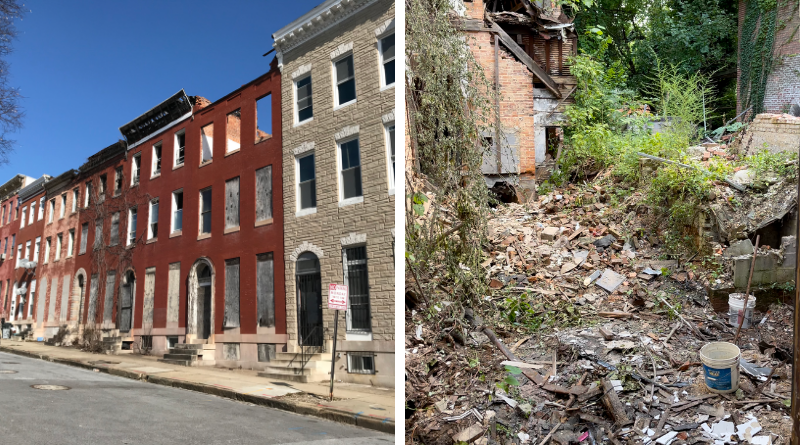
Jones grew up in the Bronx, eventually moving to New Rochelle, a city about ten miles to the north. She explained that she became more socially active after the murder of Trayvon Martin and his killer’s subsequent acquittal, and saw a connection between the systemic injustice there and the luxury transit-oriented developments being developed in New Rochelle. Jones felt that if the Black community in New Rochelle had had a five-year head start on coordinating the redevelopment, then the massive luxury complex could instead have been affordable units, and the widespread displacement she witnessed could have been averted. “I realized that developers have a lot of power,” she said.
Thus, the concept for Parity was born. The nonprofit, Jones said, is “designed to work in Black communities that have great bones, that are going to be developed eventually. It’s just a matter of whether that development is extractive, or if it is equitable and restorative.”
Jones said that the choice between building affordable rentals and affordable homes for sale was intentional. “Important for me when founding Parity was that I wasn’t just creating rentals, I was distributing wealth opportunities for others,” Jones said. The goal is to go beyond financially benefiting one Black developer, and instead, advancing the interests of many people.
The nonprofit, Jones said, is “designed to work in Black communities that have great bones, that are going to be developed eventually. It’s just a matter of whether that development is extractive, or if it is equitable and restorative.”
Bree Jones
In West Baltimore, Parity currently has 25 homebuyers in their pipeline. All are Black, with incomes ranging between 40 and 120 percent AMI. With these new homeowners, Parity hopes to create a thriving, mixed-income community that can attract businesses to serve the neighborhood.
The model is structured to foster community and individual prosperity in a neighborhood that has been devastated by racist practices, such as redlining and urban renewal. Parity uses a cohort model to educate new homeowners on topics such as credit repair, down payments, and mortgages. “It’s not just one person taking a class on their own, they’re learning collectively,” Jones said. Some of Parity’s homes include an extra unit, or “mother-in-law apartment” that can be rented out as an income generator, to help pay the home’s mortgage, or serve as additional affordable housing for the community.
Jones touched on the financial aspects of how Parity operates. There are three components of the organization’s capital stack: debt, equity, and subsidy. The equity allows for the acquisition of the abandoned buildings, the debt consists of loans that allow for construction, and the subsidy allows them to make the homes affordable. In Baltimore, many of the appraised home values are low, and yet their historic nature renders the cost of renovation quite high. This leads to what is called an appraisal gap, which Parity must find the funds to close. Funding can come from a variety of sources: city and state programs, foundations, corporate sponsorships, and private donations.
To this end, Jones has successfully advocated for the passage of a state law in Maryland establishing a dedicated source of appraisal gap funding, through the Historic Redlining Financial Assistance Program and Fund through the Maryland Department of Housing and Community Development (DHCD). The legislation was enacted in May 2021, with the rulemaking process currently underway. The Neighborhood Homes Investment Act, introduced in Congress by U.S. Senator Benjamin Cardin of Maryland, would create similar dedicated funding at the federal level.
One current problem, she mentioned, is that Low Income Housing Tax Credits (LIHTC), the most common source of affordable housing financing in the country, are restricted to rental units. She noted how this seemingly minor difference worked to keep low-income people from one of the most common wealth-building practices: homeownership. Jones and Parity approach development “so that we can ensure multi-generational wealth transfer and to ensure that black folks in particular are the beneficiaries of development–and not collateral damage of development.”
With regards to transit-oriented development, Jones acknowledged that TOD has the potential to be inequitable and extractive, and discussed how Parity works with legacy community residents who might otherwise face displacement. Efforts include educating residents on homeownership, helping homeowners take advantage of existing programs, or supporting them in their efforts to keep their properties.
Lessons for TOD
These three professionals, dissatisfied with current development practices, sought out different ways to approach the process. They are but a few of the individuals from diverse backgrounds who are creating alternative models of how to develop and redevelop near transit.
These interviews highlight several challenges and opportunities: new policies that support the work of small development businesses, overhaul of the LIHTC model to support homeownership, passive income, and wealth-building, and diversification of funding streams to provide better gap financing. Beyond this, there is the need to shift the culture within the development industry—to bring more voices into the room and make them welcome and meaningful partners in the work. This final shift needs to be more expansive than following traditional Minority Business Enterprise requirements, which can minimize input from people of color, and which often pigeonhole them into work focused only on affordable housing.
For TOD, as equitable development becomes a major focus, the lessons learned from the experiences of developers of color must be used by states, localities, and transit agencies to inform policy and programs that equitably incentivize and support projects from a broad swathe of developers. TOD can take many forms including an all-affordable housing complex near several bus stops, a comprehensive neighborhood revitalization near a light rail station, or a two-unit rowhouse a few blocks from an elevated train. By listening—and learning—from the experience and practice of developers of color, communities can develop more equitably for everyone.

